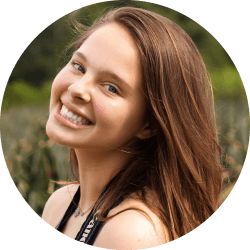Learning Every Day
My alarm goes off at 9:15 am each morning. “Starships” by Nicki Minaj starts blasting and my roommate and I roll out of bed. We usually put on a sweatshirt and shorts before taking the stairs down to the second floor. After grabbing a baguette or an orange, we walk the final ten meters to our classroom, a small conference room with a projector in the front and tables arranged in a U shape.
Our teacher, Katya, starts class by having us engage in a lively discussion, usually on the topic we were previously learning about. Our group of twenty-three loud and opinionated teenagers usually has no problem bantering back and forth about complex subjects such as the refugee crisis, the climate crisis, and economic globalization. Katya expertly guides us by interjecting with facts or quotes that keep our conversation productive and moving in the right direction.
About an hour and a half in, we get a ten-minute break. We usually spend that break going to the bathroom, getting water, or scrolling through the news we missed while we were asleep. After the break, it’s time for Katya to teach us about a subject; the content is taught in a different format every day.
When we were learning about migrants in the European Union, we reviewed an infographic that had been released by the UN, studying each statistic and its meaning in depth. When we were learning about the climate crisis, we had a mostly discussion-based class about the leading causes of global warming and the best ways to move forward with implementing solutions. When we reviewed the issues of minority rights, we both learned about and shared personal stories of discrimination while discussing how countries previously combatted and are currently handling issues of racism, sexism, ableism, xenophobia, and more.
Each day had a topic, and our afternoon activities would connect directly to what we were learning in class. After three hours of class on human rights violations, we visited Amnesty International and learned all about their efforts to combat these issues, meeting Amnesty International employees and participating in a workshop they lead specifically for us. Once we had learned all about the climate crisis, we met with locals that volunteered with Belgian climate organizations to discuss their efforts in Europe. We visited the European parliamentarian museum right after our history of the European Union class, which was incredible; we had the opportunity to see photographs, touch artifacts, and hear stories about the events that shaped the modern governmental structure we see today.
Before this program, I was worried that I would be spending my summer in a classroom and hardly get a break from school. After arriving here, I’ve realized that there is so much more to this program than class.
Our classes feel like fun discussions that I would have with well-informed friends at the dinner table. Our activities are an amazing balance of productive learning and fun. Our free time is an opportunity for us to immerse ourselves in a new city and get to know the European lifestyle. I’m loving every minute!
- Steph
Related Posts
A Conversation With The Foreign Policy Youth Collaborative
Just about a year ago, a handful of friends who attended our CIEE World Government program in Brussels, Belgium, decided to organize to give youth a voice on world affairs... keep reading
Friends/Amis/Freundes/Vrienden
Summer isn’t summer without amazing friends. This trip, I’ve made some of the best friends I’ve ever had. On the very first day, we were all exhausted and extremely jet-lagged... keep reading
The Last Friday Together
Who'd have thought that three weeks could go by so fast? During their final class on Friday, students worked on finalizing their pitch for a website designed to boost agency... keep reading





